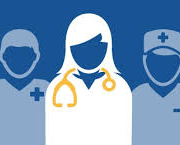The following is the latest health policy news from the federal government as of 2:30 p.m. on Tuesday, November 23. Some of the language used below is taken directly from government documents.
The White House
- The White House has posted a transcript of the November 22 press briefing given by its COVID-19 response team and public officials. Go here for the slides presented during that meeting.
 Provider Relief Fund
Provider Relief Fund
- HHS announced that it has begun distributing $7.5 billion in American Rescue Plan rural payments to providers and suppliers that serve rural Medicaid, Children’s Health Insurance Program (CHIP), and Medicare beneficiaries. The average payment is $170,700, with payments ranging from $500 to $43 million for an entire health system. More than 40,000 providers in all 50 states, Washington, D.C., and six territories will receive these rural provider payments. Learn more from this HHS news release. In addition, go here for a state-by-state breakdown of the payments and here for a data set with all of the recipients of this $7.5 billion in rural provider payments.
- HHS’s Health Resources and Services Administration, which administers the Provider Relief Fund, has established a 60-day grace period for complying with the fund’s Reporting Period 1. The grace period began on October 1, 2021, and will end on November 30, 2021 at 11:59 p.m. (eastern). Learn more here, under “60-Day Grace Period – Reporting Period 1.”
Department of Health and Human Services
COVID-19
- HHS’s Office of the Assistant Secretary for Preparedness and Response has posted a presentation titled “Monoclonals and More: Issues and Opportunities with Early COVID-19 Treatment Options.” The presentation includes information about therapeutics and their use and distribution, guidelines for determining appropriate treatments, and links to presentations and other resources. Find the presentation here.
Health Policy Update
- HHS has announced that it will be awarding an additional $1.5 billion to help grow and diversify the nation’s health care workforce and bolster equitable health care in the communities that need it most. These awards are supporting the National Health Service Corps, Nurse Corps, and Substance Use Disorder Treatment and Recovery programs, which address workforce shortages and health disparities by providing scholarship and loan repayment funding for health care students and professionals in exchange for a service commitment in hard-hit and high-risk communities. Learn more about these new resources for health care workforce development in this White House news release and another news release from HHS.
- HHS has announced the availability of $35 million in American Rescue Plan funding to enhance and expand the telehealth infrastructure and capacity of Title X family planning providers. HHS plans to use funds to award an estimated 60 one-time grants to active Title X grantees. Applicants can begin the application process on Grants.gov and must apply by February 3. Learn more from this HHS news release.
- A new HHS report concludes that millions of Americans with private health insurance experience some kind of surprise medical billing. The report found that surprise medical bills are relatively common among privately insured patients and can average more than $1,200 for services provided by anesthesiologists, $2,600 for surgical assistants, and $750 for childbirth-related care. HHS has issued the report as it continues to develop regulations implementing the No Surprises Act, which was enacted earlier this year. Learn more about the report from this HHS news release and see the full issue brief “Evidence on Surprise Billing: Protecting Consumers with the No Surprises Act.”
- HHS has announced the creation of a new federal advisory committee, the Ground Ambulance and Patient Billing Advisory Committee. As mandated by the No Surprises Act, the new advisory committee will be charged with providing recommendations to the secretaries of HHS, Labor, and Treasury on ways “to protect consumers from exorbitant charges and balance billing when using ground ambulance services.” Learn more about the new Ground Ambulance and Patient Advisory Committee, its composition, and its scope of endeavor from this HHS news release and this Federal Register notice.
 Centers for Medicare & Medicaid Services
Centers for Medicare & Medicaid Services
COVID-19
- CMS has updated its FAQ on the health care staff vaccination interim final rule.
- CMS has posted an FAQ on the requirements for CLIA certification of over-the-counter COVID-19 tests authorized by the FDA for home use.
Health Policy Update
- CMS’s Center for Medicare and Medicaid Innovation has published an evaluation of year six of its Independence at Home Demonstration, in which selected primary care practices provide home-based primary care to targeted chronically ill beneficiaries for a three-year period, with CMS tracking beneficiaries’ care experience through quality measures and paying incentives to practices that meet quality measures while generating savings for Medicare. Go here to learn more about the program and find a link to the program’s year-six evaluation.
Centers for Disease Control and Prevention
- The CDC has updated its guidance for people who have been fully vaccinated against COVID-19.
- The CDC has updated its recommendations on infection prevention and control considerations for health care facilities providing obstetric care for pregnant patients with suspected or confirmed COVID-19 in inpatient obstetric health care settings, including obstetrical triage, labor and delivery, recovery, and inpatient postpartum settings. Find the updated recommendations here.
- The CDC has updated its resources about children and COVID-19: an FAQ, a summary of myths and facts about COVID-19 vaccines for children, and a guide for health care professionals to use when talking to children about the vaccine.
- The CDC has published data summarizing COVID-19 hospitalizations and deaths by race and ethnicity and hospitalizations and deaths by age.
- The CDC has updated its information about COVID-19 vaccines for moderately and severely immunocompromised people.
Medicaid and CHIP Payment and Access Commission (MACPAC)
- MACPAC has published two new issue briefs: one on adults’ experiences with gaining access to medical care and another on children’s experiences with gaining access to medical care.
 Stakeholder Events
Stakeholder Events
CMMI – The Value-Based Insurance Design Health Equity Business Case for Medicare Advantage Organizations – December 2
The Center for Medicare and Medicaid Innovation (CMMI) is sponsoring a series of webinars for current and potential Medicare Advantage Organization participants in its Value-Based Insurance Design Model. The first webinar in the series will provide an overview of the model’s health equity incubation sessions effort, articulate a business case for Medicare Advantage organizations to leverage Value-Based Insurance Design Model components to address health inequities in their member populations, and provide specific guidance and clarification on the full extent of health equity-focused flexibilities that fall under the model’s waiver authority. The first webinar will be held on Thursday, December 2 at 2:30 p.m. (eastern). Go here for more information about the webinar and to register to participate.
CDC – Molecular Approaches for Clinical and Public Health Applications to Detect Influenza and COVID-19 Viruses – December 9
The CDC will hold a webinar on Thursday, December 9 to share with clinicians information about molecular approaches for clinical and public health applications to detect the influenza virus and COVID-19. Go here to learn more about the webinar and how to participate.

 Provider Relief Fund
Provider Relief Fund Centers for Medicare & Medicaid Services
Centers for Medicare & Medicaid Services  Stakeholder Events
Stakeholder Events